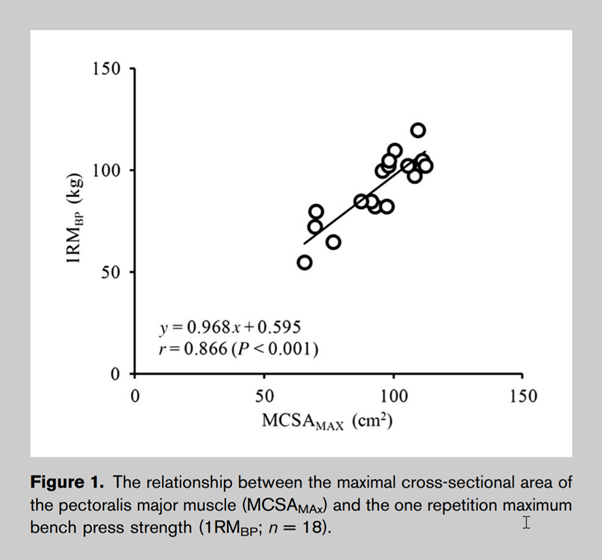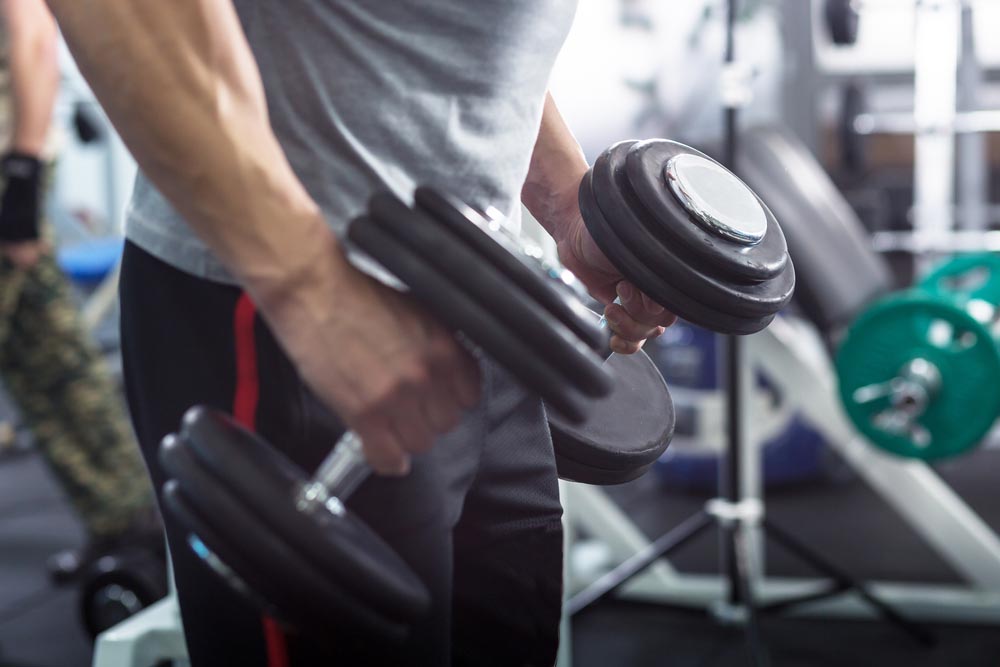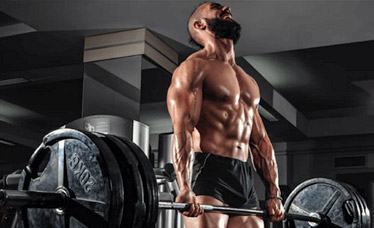DOES SIZE EQUAL STRENGTH? (THE SIMPLE ANSWER)
People often claim that size does equal strength. But is that true? This article has the answer.
You will discover whether you do indeed need to become strong if you want to build muscle.
And, you will learn practical applications that will help you put this info into practice for optimal results.
Table of Contents
The Primary Driver of Muscle Growth
When it comes to building muscle, there is one training factor that is, hands down, the most important: progressive overload.
To be more specific, if you want to get bigger, you need to focus on getting stronger.
Do not prioritize getting a pump, feeling the burn, performing a ton of sets, or using special lifting techniques.
Instead, make it your goal to add more weight to the bar over time on all the key compound lifts while maintaining proper form. If you do that, you will build muscle. It is guaranteed.
There is no way around it. A stronger muscle is a bigger muscle. And training for improved strength performance is the fastest way to put on size, especially as a beginner or intermediate lifter.
To show an example, let’s look at a study published in The Journal of Strength and Conditioning Research.
In the study, scientists assessed the link between chest size and one rep max strength on the bench press. They found that the more weight the subject could bench, the more mass they had on their pecs.

Now, people often get confused when they see someone in the gym who might not be that strong and is lifting less weight than they are, yet they are bigger and more muscular.
The opposite can also be true. You can have a guy who lifts impressive weights but does not seem to carry the “right” amount of muscle in relation to that weight. So, if strength equals size…
How Can It Be That A Stronger Lifter Is Not Necessarily More Muscular?

The answer is simple. It is because strength does equal size to a large degree, but it is relative to the individual.
This means that as you get stronger, you will get bigger. But the amount of strength development that you need to look a certain way is not the same for everyone.
Squatting 315 pounds for reps does not mean that your legs will be the same size as every other guy who squats the same weight.
One person who squats 315 pounds or even less weight might have impressive legs while another who squats 315 might not look as impressive.
When we talk about muscle growth, we have to be realistic and acknowledge the role that genetics play in the process.
Some people respond faster to training and have a bigger hypertrophic response to a certain level of strength. Others do not respond quite as well.
The latter person might have to spend more time developing their strength to reach a similar muscular level.
Aside from the hypertrophic response to training, body structure is another huge factor.
Factors like limb length, muscle insertion points, waist size, wrist and ankle circumference, clavicle width, and height impact how a particular amount of muscle looks on a given person.
You could have 15 inch upper arms when flexed, but because of a combination of these different factors, it could proportionally look as muscular as someone with 17 inch arms.
Maybe your arm length is shorter, which makes your bicep and tricep seem wider. Or your bicep inserts further down toward your elbow so that you have a longer muscle belly.
Or perhaps you have a smaller wrist. This creates the illusion of a bigger upper arm compared to someone with bigger wrists.
Such things can give you an advantage. You will then not have to put on as much muscle to have impressive-looking arms compared to someone with less favorable ratios.
Remember: physique aesthetics are partly about your measurements on paper. But at the end of the day, it comes down to how muscular you look, which involves an illusory aspect.
If someone has a more “favorable” body structure, they might not have to add as much weight to the bar or gain as much mass to achieve a certain level of visual muscularity.
Leverages are another factor. Depending on the exercise someone does, they might have an advantage or disadvantage based on their body metrics.
Some people are better suited for certain lifts. Even though they might have built up to lifting a decent amount of weight compared to someone else, they might not appear as big as you would expect.
That is because they already had a built-in advantage upfront. Their body is just better suited to moving more weight on that exercise.
For example, you might see someone deadlifting quite a bit of weight without being that big. That could result from having long arms and short legs, which decreases the required range of motion.
However, those long arms will be a disadvantage during the bench press. It makes the exercise more challenging by increasing the length of the bar path.
The other thing to consider is that you do not, and can not, know someone’s specific training goals by looking around your gym and comparing yourself to him or her.
Some people might focus more on certain lifts and thus have spent more time building up their strength on those movements.
Remember: while the amount of muscle someone carries has a significant impact on how strong they are, variables like movement efficiency also play a role.
If someone does a particular exercise often, neurological adaptations will occur that make them stronger on that movement.
It is not fair to compare that person’s strength to someone who has never done that exercise. That is why you have to consider someone’s training program.
Also, beyond those three factors, a final factor to consider is drug use. You might see guys in the gym who are suspiciously muscular even though they are not very strong.
That often is a dead giveaway of steroid use. Steroids provide a huge muscle building advantage. You can literally gain muscle by taking steroids while only sitting on the couch.
So, do not discount the factor of drug use. It can have a massive impact on the amount of weight a given person needs to lift to achieve a certain muscularity level.
That said, none of these factors change the fact that if you want to build muscle, you need to focus on gaining strength. The more strength you gain, the more muscle you will build.
You have to realize, though, that this is all relative to you as an individual.
Each individual will gain muscle as they gain strength. But the specific amount of muscle they will gain and how that will look depends on genetics, body structure, lifting leverages, and drug use.
Here Is What To Do

Do not concern yourself too much with what everyone else in the gym or online is doing.
Strength does equal size for the most part. So, stay consistent with your program, track your workouts, and build up a solid strength foundation. (Check out this article if you’re having trouble gaining strength in the gym.)
Combine that with proper nutrition and you will put on new muscle mass as you add more weight to the bar.
As a final thought, when I refer to gaining strength, I am talking about lifting more weight (or doing more reps with a particular weight) while maintaining proper form. Increasing the resistance at the cost of form does not count.
If you found this article helpful, make sure to sign up for your FREE custom fitness plan below...





